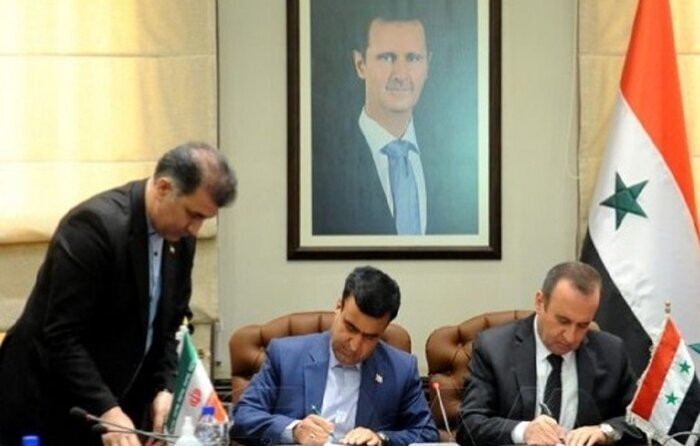Iran, Syria sign MOU to combat SDSs

TEHRAN – Iran and Syria inked a memorandum of understanding (MOU) to curb sand and dust storms (SDSs), ISNA reported.
An Iranian delegation, headed by Department of Environment Chief Ali Salajegheh, has embarked on a trip to Iraq, Syria, and Kuwait to resolve the problem of sand and dust storms.
In a meeting on Tuesday in Damascus, Salajegheh and Syrian Minister of Local Administration and Environment Hussein Makhlouf inked an MOU to contain the phenomena.
Under the MOU, a joint working group will be formed to hold regular meetings at least once a year in Iran and Syria in order to plan and take action in this regard.
Moreover, measures such as educational cooperation and transfer of experiences, as well as the implementation of joint projects as pilots in various areas; dealing with, managing, and adapting to the SDSs are envisaged.
On May 30, Salajegheh and Iraqi Prime Minister Mustafa al-Kadhimi discussed effective and immediate ways to control sand and dust storms.
In order to negotiate with neighboring countries to reduce the intensity of dust from foreign origins, Salajegheh expressed hope that by creating a regional convergence and alignment, appropriate achievements in combating dust will be achieved for the people.
SDSs phenomenon effects
The SDSs phenomenon has been plaguing the country for several years and has caused problems in many provinces. According to experts, natural and human factors are involved in the occurrence and severity of this phenomenon which is mainly caused by excessive consumption of water and drying up reservoirs.
Over the past two years, the precipitation rate has been on a downward trend, as a result, sources of sand and dust storms (SDSs) have increased compared to a year before, Ahad Vazifeh, head of the national center for drought and crisis management, has said.
Declining water levels in dams and lakes mean that water available to humans has been reduced and the dust-raising areas have been increased, he lamented, ISNA reported.
The internal dust sources are estimated at 34.6 million hectares, generating an average amount of 4.22 million tons of dust per year, about 1.460 million hectares are dried wetlands.
Some 4.23 million tons of dust are raised per year, which means the loss of soil fertility will hit the agricultural sector.
All the SDSs sources are not located in Iran, 300 million hectares in the neighboring countries are giving rise to SDSs, which transport dust into Iran. The total dust density is estimated at about 150 million tons.
In fact, the dust is raised from Turkmenistan, Uzbekistan, Afghanistan, and Pakistan in the northeast as well as Iraq, Syria, Saudi Arabia, and Jordan in the south, southwest, and west.
FB/
Leave a Comment